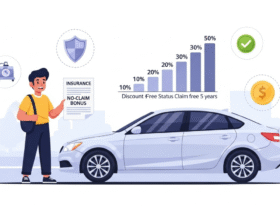Operating a small business is a gratifying undertaking, although it comes with difficult obstacles. One such deeply unsettling concern is theft by an employee. It becomes mind-bending distressing to normalize the thought of an individual you trust, so deeply that you have shared these business responsibilities with them, inflicting such damage on your business, which could devastate it financially.
You could ask, “Does business insurance cover employee theft?” Such questions do not have easy answers. Most business or commercial policies would not indemnify for loss arising out of acts of dishonesty committed by the employees of the business organization. Still, the market offers cover for such specific and specialized risks.
In this text, we will focus on the details of coverage options available for employee theft, what insurance policies would provide the coverage required and outline strategies to protect businesses from these internal risks.
Key Takeaways
- Insurance Exclusions: Employee Theft: The majority of employee theft using a business insurance policy will not pay out under a claim, as the funds are regarded as a standard loss sustained by the business.
- Reasons for Consideration of Employee Dishonesty Insurance: Companies mostly do not think to cover the basics, and this is the proper reason why all businesses no matter whether they are large or small should consider adding employee dishonesty insurance as part of their basic policies.
- Available Coverage Types: A comment relevant to the previous suspicious is fidelity bonds, commercial loans and policy endorsement.
- High Risk Industries: Employees in low paid positions dealing with the general public, as well those employed with retail trade have increased susceptibility to employee theft.
- Steps to Avoid Induction: Adherence to corporate codes of conduct, background checks, surveillance mechanisms as well as delineated guidelines will mitigate the risk of theft from within the organization.
Understanding Employee Theft
Prior to delving into insurance solutions, it is important to clarify employee theft. Also referred to as employee dishonesty, it encapsulates the theft of funds, property, or services from an organization by its employees. This encompasses pilfering cash, stealing inventory, and even taking proprietary data.
An organization spends nearly 5% of their revenue every year on Fraud. For small companies, this translates into massive losses. This data is according the Association of Certified Fraud Examiners.
Does Standard Business Insurance Cover Employee Theft?
Let’s answer what most would consider to be the pressing question on their mind: does standard business insurance, in fact, cover employee theft? I have asked this to myself as well when I first opened up my business. Just like many small business owners out there, I “knew” that their general liability or property insurance would cover “situations” that arose from the business working with itself. However, the reality is — most policies do not cover employee theft.
This might come as a surprise, particularly because we think of insurance as a safety net for all things business-related. For instance, general liability insurance usually covers 3rd party claims like a customer’s injury in your store, and you also damaging someone’s property. It is nice protection, but it does not cover an employee stealing from you. The same applies to commercial property insurance. You are most likely covered for inventory theft, but what if it’s an employee doing the stealing? That’s usually excluded.
This is the difficult part. Most business owners don’t learn this until it is too late, after there are unpaid overdue balances, unexplained stock shrinkage, or a trusted employee misusing access to accounts or customer databases. I’ve heard other self-employed stories where the shocking loss was not only damaging, but financially devastating.
To fully mitigate risks stemming from internal theft, what you actually need is a specific type of protection such as employee dishonesty coverage or commercial crime insurance. These policies protect businesses against deceitful acts performed by their personnel, such as stealing cash registers and expunging filed expense reports.
To put it simply, no; standard business insurance does not include coverage for employee theft. If you want comprehensive coverage, you will need to go further. And frankly, in today’s environment of narrow profit margins and increasing fraudulent activities, that added layer of protection is not simply advisable – it is reassuring.
Types of Insurance Covering Employee Theft
1. Employee Dishonesty Coverage
This type of policy insures a business for losses incurred because of a policyholder’s employees’ dishonest conduct. Such losses can arise from acts of fraud under Employee Dishonesty Coverage or Fidelity Insurance, as it is colloquially titled. This form of insurance can be taken as an endorsement to an existing Business Owner’s Policy (BOP) or can be purchased standalone.
In any case, note that terms of these policies differ in limits and thus need careful scrutiny for differences.
2. Fidelity Bonds
This form of coverage guards firms against damages resulting from immoral conduct by personnel. Such employees are often referred to as fidelity bond employees. These fidelity bonds are often mandated and used by clients or regulatory authorities. Typical users include contracting literature as well as finance and government contracting industries.
Fidelity bonds have subcategories which includes:
- First Party Bonds: Insures your business from losses arising out of employee theft.
- Third Party Bonds: Insures your clients or customers against losses arising from your employee’s actions.
3. Commercial Crime Insurance
This type of policy provides comprehensive coverage for various criminal activities like employee theft, forgery, and cyber crimes. This policy covers first party loss, third party loss, or both depending on set conditions.
Such a policy is vital for businesses dealing with large volumes of cash and/or sensitive information.
Coverage Limits and Deductibles
While contemplating insurance policies for employee theft, it is crucial to grasp the deductibles and limits for each policy.
| Insurance Type | Coverage Limit | Deductible Range |
|---|---|---|
| Employee Dishonesty Coverage | Varies (e.g., $100,000 to $2.5 million) | $100 to $500,000 |
| Fidelity Bonds | Varies (e.g., $50,000 to $1 million) | $250 to $1,000 |
| Commercial Crime Insurance | Varies (e.g., $250,000 to $5 million) | $500 to $2,500 |
Note: Policies differ with each employee and agency, as such it is advisable to check with your insurance provider to get the most suitable terms.
Industries at Higher Risk
Some businesses are more susceptible to employee theft and fraud due to their operational structure. This is something I learned while working with other small business owners. In some areas, the temptation or access loots make it much easier to steal. If your business is in these sectors, it might be more prudent to take the additional measures and look for additional insurance coverage.
Retail
This prompts my first reflection around retail — specifically shop owners— selling clothes, electronics, or even convenience stores. Each of your workers opens cash registers, work on inventory, and physically control stock in limited supervised. Their access to cash and stock makes them vulnerable to employee theft. Able to control small items leads to gradual inventory discrepancies over time.
Financial Services
Firms, including bookkeeping companies, loan agencies, and small bank branches, lie within the finance industry. Employees working in financial services have the greatest responsibility because they oversee vast sums of money and possess sensitive data about clients.
In every workplace, there is a potential for fraud where employees decide to change some factors or siphon funds. The repercussions can be extremely tedious and damaging, sometimes revealing the harm done only months later.
Manufacturing
The stringent focus on output, including products or finished goods, and deadlines drives employee productivity in manufacturing. However, there is always the movement of tools and finished goods, which is their inventory as well.
Due to the numerous literal and figurative components in motion, employee theft becomes rampant. People stand to gain by taking home or utilizing small amounts of company resources. Until these discrepancies become a trend, they remain unnoticed.
Healthcare
Within the healthcare sector, particularly in clinical and pharmacy settings or through home healthcare services, occupational crime assumes a different, but no less serious, form. Consider access to controlled substances, medical devices, or even sensitive patient information.
An employee pilfering medication and pharmaceuticals or misusing proprietary health information management systems poses far more than a financial risk — it’s a lawsuit waiting to happen from a legal and ethical framework. For those associated with healthcare, the consequences of employee pilferage extend deeper than finance, causing irreparable damage to reputation.
Why Crime Insurance Is Essential for These Sectors
For businesses operating in these higher-risk sectors, crime insurance is not an option, but a primary necessity. In these cases, standard business insurance will most likely fail to provide adequate coverage. What is needed is employee dishonesty coverage or commercial crime insurance.
These policies specifically address losses due to theft, embezzlement, forgery, and fraud committed by the insured’s employees. The absence of such insurance policies pose a serious risk by creating significant gaps within a protection plan.
Preventative Measures
The ultimate objective is preventing employee theft. Preventing employee theft comes long before insurance comes into play—I would argue that theft is a burden that insurance cannot lift. After discussing the matter with fellow business owners, financial experts, and an insurance consultant, I’ve crafted a streamlined approach that works—simply put, it saves time and it’s worth the effort.
Background Checks
Every hiring decision creates a new risk for the business—there is risk with every worker that is brought on board. It’s a must to conduct background checks when trying to fill a new position within your organization. You don’t need to be paranoid, but verifying a candidate’s past job history, any criminal records, and even their provided references assists in confirming their trustworthiness. Without verifying prior to engagement, it becomes impossible to mitigate potential damages from surprises.
Segregation of Duties
This is especially true for smaller firms in which employees multitask and wear several different hats. An employee handling all invoicing, payments, and bank deposits is counterproductive in some ways, but worrying in many others. Wherever achievable, make sure to broker financial responsibilities so that everyone has access only to some parts of your money flow instead of granting a single individual full command over every procedure.
Regular Audits
Conducting even small-scale audits on a regular basis helps identify discrepancies far before they escalate into more complex challenges. I know some business owners who do informal audits every few weeks and formal reviews quarterly. Whether you hire a CPA for your accounts or do it yourself, monitoring your financial data is one of the most prudent decisions you can make.
Security Systems
CCTV cameras, alarm systems, and even basic locks and keys can prevent theft from occurring in the first place. It’s not only about identifying culprits after the fact; the mere presence of a camera or log system in place is often enough to deter dishonest actions.
Employee Training
Finally, I believe in talking openly with your employees around honesty, accountability, and the repercussions tied to these principles. Train them not only on what is expected of them, but what is prohibited within the workplace, and the consequences tied to breaching such regulations. While training doesn’t have to be formal and daunting, it must be unambiguous. The more your team knows how seriously you regard theft, the less likely they would be to cross that line.
My Opinion
Theft by employees poses a significant problem for small enterprises; however, proper insurance and preventative measures will protect smaller firms from potential losses. Knowing the types of insurances that pertain to your business and evaluating your risks will identify and mitigate any weaknesses in coverage.






























Leave a Reply